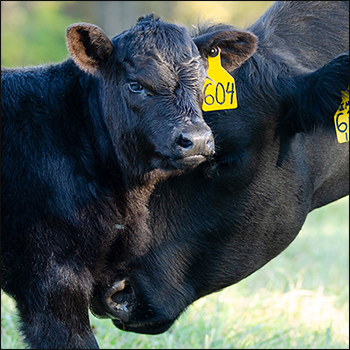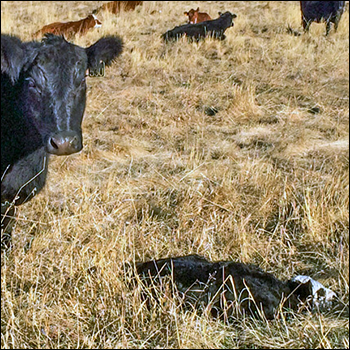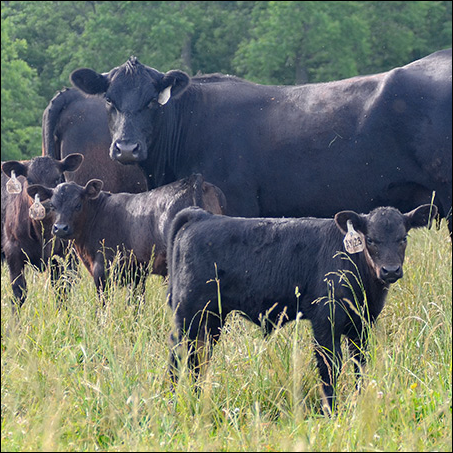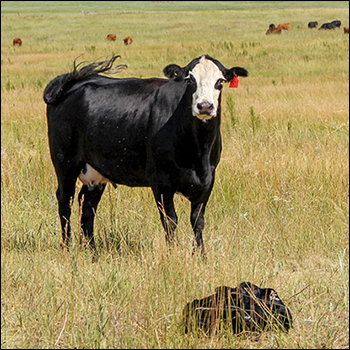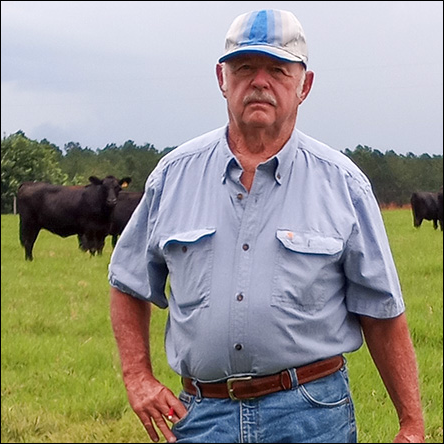
Nitrate Concerns
Drought-stressed forages and silage cause concerns for feeding livestock.
Nitrate toxicity may be a problem for farmers grazing corn or feeding green chop this fall. There are many factors to consider when deciding if livestock are at risk of nitrate toxicity. Drought conditions and high levels of nitrogen in the soil can cause prime conditions for high nitrates in plants.
During times of drought, higher levels of nitrogen are taken up by the plants. Risk is increased if soil nitrogen levels are high. High levels of nitrates in the bloodstream and rumen reduce the ability of oxygen to be carried in the blood to tissues in the body. Symptoms of nitrate toxicity include brown color of blood and mucous membranes, depression, weakness, staggering, incoordination, excess salivation, abortion, and possibly death.
Sorghum, sudangrass, sorghum-sudangrass hybrids, Johnsongrass, corn, millet and some weeds have a higher risk of nitrates than other forages. If grazing corn this fall, farmers need to be aware of possible nitrate toxicity problems. Nitrate concentration is highest in the lower parts of the stalks. When used for silage, corn’s nitrate levels are reduced through the fermentation process. Feeding these crops as hay does not reduce nitrate levels. If corn or silage is questionable, always test it for nitrate content before using it as a feed source. Contact your local county extension agent for information on testing your forages for nitrate content.
Feeding drought-stressed corn silage to beef cattle
The nutrient content of the silage should also be analyzed. Drought silage will generally have 80% (between 65% and 95%) the energy value of normal corn silage. A laboratory test for acid detergent fiber (ADF) will reflect the altered energy content, which is the key nutrient variable.
Total digestible nutrients (TDN) is a common measure of energy that can be calculated from ADF as follows: TDN = 87.84 - (0.7 x % ADF). The calcium and phosphorus levels of drought silage may be lower than that of normal silage. Analyze for these minerals and supplements accordingly. It is important that all types of cattle be supplemented with calcium, phosphorus, vitamin A, trace minerals and salt.
Drought silage is generally adequate in protein and energy for beef cows in all stages of production. The protein level of drought silage is generally higher than normal silage. Unfortunately, much of this protein is in the form of nonprotein nitrogen (NPN). It can be used by cows and feedlot cattle, but it is of limited use for young cattle [less than 600 pounds (lb.)] and dairy cattle.
Drought silage can be used by stocker cattle, including replacement heifers. Nebraska research indicates that feeding drought silage results in about 0.2 lb. per day less performance with stocker cattle. The research also showed that soybean meal supplementation improved performance 0.3 lb. per day on drought silage and 0.2 lb. per day on normal silage. This was observed despite the higher protein content of the drought silage. For this reason, natural protein should be supplemented to drought silage, and urea or ammonia should not be added at harvest.
Corn can be added to drought silage, but the increases in performance may be less than expected due to negative associative effects. Finishing cattle can use drought silage as a roughage source at 10%-20% of the diet dry matter. Intermediate mixtures of grain and drought-damaged silage should be avoided once the cattle are adapted to the finishing diet. These mixtures will not give the expected performance due to negative associative effects. It may be beneficial to grow cattle longer on a drought silage diet before the finishing phase if a producer wants to use more drought silage.
Read the full handbook on nitrates in livestock feed here.
Editor’s note: This article is compiled from information from the University of Kentucky and University of Illinois Extension services. Photo by Shauna Hermel.

